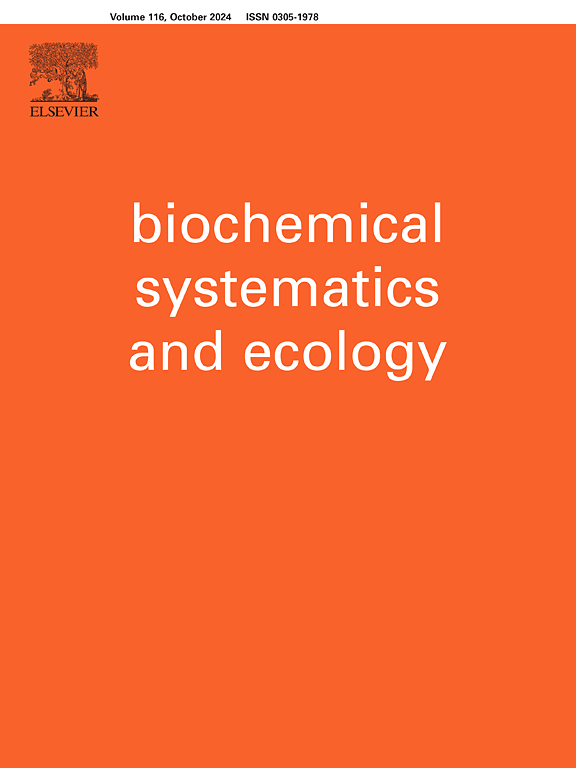Synergistic enhancement of natural mosquito repellents through matrix interactions: Insights from GC-MS and bioassays
IF 1.4
4区 生物学
Q4 BIOCHEMISTRY & MOLECULAR BIOLOGY
引用次数: 0
Abstract
While plant-based mosquito repellents are considered safer alternatives to synthetic chemicals, their short-lived efficacy often diminishes their effectiveness. This study investigates a synergistic approach using a matrix of plant-derived samples to address this limitation and enhance their repellency. In olfactory studies, powdered samples and extracts—both individual and blended—were tested against Anopheles gambiae s.l. and Anopheles funestus in laboratory and semi-field environments. Euclidean distances, Hierarchical clustering, and heatmap analyses assessed compound relationships to repellent compounds that were literature-cited. Molecular fingerprints from SMILES identifiers and Tanimoto coefficients quantified structural similarity. Sample matrices significantly enhanced repellency, demonstrating superior performance in olfactory assays (e.g., Striga hermonthica vs. Lantana camara/S. hermonthica blend: W = 787, p = 0.0013) and extending protection times in human trials (179 vs. 67 minutes, t = 21.872, p < 0.001). GC-MS analysis revealed major compounds for S. hermonthica (Methyl-6-O-[1-methylpropyl]-α-galactopyranoside, 51.047 %), Hyptis spicigera (Cyclopropanecarboxylic acid derivative, 87.137 %), and L. camara (1-Heptatriacotanol, 10.099 %). Phytol and a Phthalic acid derivative were identified, with monoterpenes (−)-Spathulenol and Cis-Z-α-Bisabolene epoxide possibly contributing to synergy. Heatmap and Tanimoto coefficient analyses revealed moderate structural similarities among compounds in active and inactive portions of sample matrices. Key compounds like Phytol and Phthalic acid derivatives, alongside potential synergists such as spathulenol and bisabolene, are hypothesized to contribute to the observed repellency. Long-chain primary alcohol 1-heptatriacotanol holds promise for optimizing plant-based repellents with extended and robust action.

求助全文
约1分钟内获得全文
求助全文
来源期刊

Biochemical Systematics and Ecology
生物-进化生物学
CiteScore
3.00
自引率
12.50%
发文量
147
审稿时长
43 days
期刊介绍:
Biochemical Systematics and Ecology is devoted to the publication of original papers and reviews, both submitted and invited, in two subject areas: I) the application of biochemistry to problems relating to systematic biology of organisms (biochemical systematics); II) the role of biochemistry in interactions between organisms or between an organism and its environment (biochemical ecology).
In the Biochemical Systematics subject area, comparative studies of the distribution of (secondary) metabolites within a wider taxon (e.g. genus or family) are welcome. Comparative studies, encompassing multiple accessions of each of the taxa within their distribution are particularly encouraged. Welcome are also studies combining classical chemosystematic studies (such as comparative HPLC-MS or GC-MS investigations) with (macro-) molecular phylogenetic studies. Studies that involve the comparative use of compounds to help differentiate among species such as adulterants or substitutes that illustrate the applied use of chemosystematics are welcome. In contrast, studies solely employing macromolecular phylogenetic techniques (gene sequences, RAPD studies etc.) will be considered out of scope. Discouraged are manuscripts that report known or new compounds from a single source taxon without addressing a systematic hypothesis. Also considered out of scope are studies using outdated and hard to reproduce macromolecular techniques such as RAPDs in combination with standard chemosystematic techniques such as GC-FID and GC-MS.
 求助内容:
求助内容: 应助结果提醒方式:
应助结果提醒方式:


